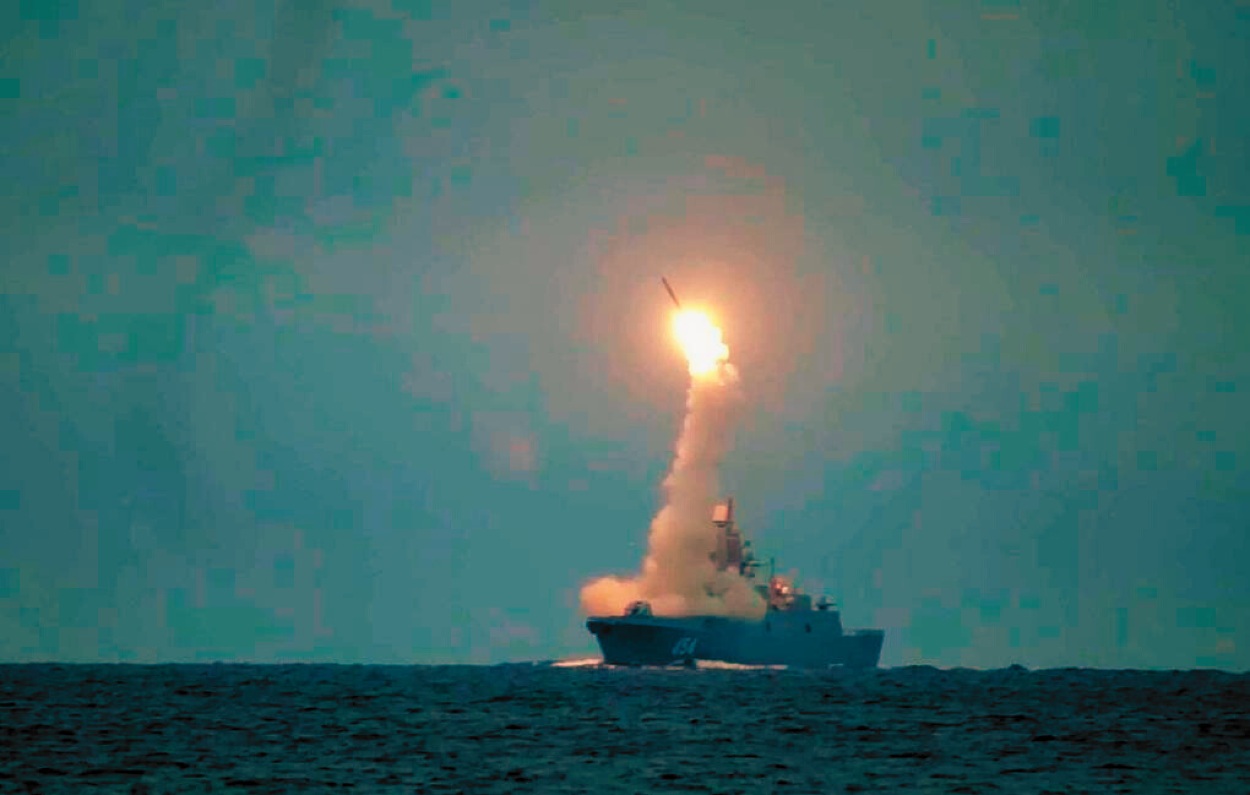On April 26, 2025, the Indian MoD announced that the Defence Research & Development Laboratory (DRDL), a Hyderabad-based laboratory of the Defence Research and Development Organisation (DRDO), had test-run a subscale scramjet engine for more than 1,000 seconds.
The ground test is a continuation of the earlier test reported in January 2025, which lasted 120 seconds. With the successful test, the system will soon be ready for full-scale flight-worthy combustor testing.
The DRDL’s achievement marks a pivotal moment in India’s missile technology journey. If successful in future testing, this milestone could establish India as a leader in the highly competitive field of hypersonic missile development.
The PIB release announcing the recent test states, “With the successful test, the system will soon be ready for full-scale flight-worthy combustor testing.”
To fully appreciate the significance of this statement, it is essential to understand the broader context: no country other than Russia has operationally deployed an air-breathing hypersonic cruise missile.
This places India in a select group of nations at the cutting edge of hypersonic missile technology, potentially positioning the country to break new ground in this strategic and highly competitive arena.
Let’s step back and examine how the Defence Research and Development Organisation (DRDO) has managed to steal a march over even the most powerful and technologically advanced nations, some of which have easier access to Western technology and resources.
Development History
The Defence Research & Development Laboratory (DRDL), a Hyderabad-based arm of the Defence Research and Development Organisation (DRDO), has taken the lead in developing a long-duration, scramjet-powered hypersonic system.
This new effort is strongly rooted in the technology foundation laid by the Hypersonic Technology Demonstrator Vehicle (HSTDV) program.
The HSTDV served as a crucial testbed for developing an air-breathing, kerosene-fueled hypersonic cruise missile. Its core objective was to achieve autonomous, sustained flight at hypersonic speeds using a supersonic combustion ramjet (scramjet) engine.
The HSTDV platform consisted of a hypersonic cruise vehicle (CV) mounted atop a rocket launch vehicle (LV), initially protected by aerodynamic fairings.
In flight, the LV boosted the CV to an altitude of 30–35 km and accelerated it to a velocity of Mach 6.5. Once these conditions were achieved, the CV separated, discarded its fairings, and ignited its scramjet engine to maintain Mach 6.5 flight for a targeted duration of 20 seconds.
India’s technological leap was validated on September 7, 2020, when DRDO successfully flight-tested the HSTDV. During this landmark trial, the vehicle not only met but exceeded its goal of 20 seconds of sustained scramjet-powered hypersonic flight, firmly establishing India’s credentials in cutting-edge hypersonic technology.
Challenges Of Sustained Hypersonic Flight
Sustained hypersonic flight using scramjet engines presents extreme technical challenges, primarily due to the intense aerodynamic heating encountered at speeds above Mach 5. The cruise vehicle must incorporate advanced thermal protection systems and materials capable of withstanding temperatures exceeding 2,000°C.
Efficient combustion inside a scramjet is another major hurdle. Since air continues to flow through the engine at supersonic speeds, there are only milliseconds available for fuel injection, mixing, and ignition.
Additionally, managing aerodynamic drag and shockwave behavior requires exceptionally precise vehicle design to maintain flight stability and engine efficiency.
Through the HSTDV program, the DRDL successfully overcame most of the critical challenges associated with hypersonic flight, except the problem of frictional heating during sustained flight.
The HSTDV’s scramjet demonstrated 20 seconds of sustained hypersonic flight, a major achievement. However, developing an operational hypersonic cruise missile—like Russia’s Zircon, which requires surviving intense heating for several minutes of flight—demands far greater advances in thermal protection and system endurance.

Active Cooled Scramjet Combustor
The DRDL is now developing a scramjet engine capable of sustained hypersonic flight by employing a combination of active cooling and thermal barrier coatings (TBCs) in the combustor.
Active cooling enables scramjet engines to operate longer and at higher speeds without suffering structural damage. In this method, a coolant fluid—often the same kerosene-based fuel used for combustion—is circulated through channels embedded within the combustor walls.
As it flows, the coolant absorbs the intense heat generated by hypersonic airflow and combustion, preventing the engine structure from overheating. Once heated, the fuel enters the combustor and burns more efficiently, making the system thermally regenerative and improving overall performance.
This innovative approach addresses one of the most critical barriers to operational hypersonic cruise missiles: surviving the brutal thermal environment of sustained flight at speeds exceeding Mach 5.
Thermal Barrier Coating
In a scramjet, air entering the engine is compressed by the vehicle’s own high speed and heated to extreme temperatures, often exceeding 2,500°C (4,500°F). The combustor walls are directly exposed to this searing airflow and the combustion gases.
To survive these harsh conditions, a thermal barrier coating (TBC) is applied inside the scramjet, specifically on the internal surfaces like the walls of the combustor, where the hottest gases impact the structure.
The TBC acts as an insulating shield, protecting the engine’s metallic parts from extreme heat. It also prevents oxidation and other forms of high-temperature corrosion that could quickly degrade critical components.
By reducing heat transfer into the structural material, the TBC extends the engine’s life and reliability, making long-duration hypersonic flight possible.
Without this protection, the engine walls would melt, weaken, or fail catastrophically under sustained hypersonic conditions.
Endothermic Scramjet Fuel
Active cooling of the scramjet engine required the development of an endothermic fuel—a fuel engineered to absorb heat through chemical reactions even before combustion begins.
As the fuel flows through cooling channels, it undergoes controlled thermal decomposition, absorbing large amounts of heat. This process protects the engine structure while preparing the fuel for more efficient combustion.
The DRDL, in collaboration with Indian industry partners, successfully developed an endothermic scramjet fuel that was central to its recent breakthrough in sustaining hypersonic propulsion. The new fuel not only enhances cooling but also eases ignition at the extreme temperatures encountered during hypersonic flight.
To meet the scramjet’s exacting needs, the team pioneered a specialized manufacturing process capable of producing the fuel at an industrial scale while maintaining the stringent quality standards demanded by DRDL.
Advanced Ceramic TBC
The DRDL, in collaboration with a Department of Science & Technology (DST) laboratory, has developed a new advanced ceramic Thermal Barrier Coating (TBC) tailored for scramjet engines.
This next-generation TBC is engineered to withstand extreme temperatures and thermal stresses encountered during sustained hypersonic flight. It is applied to the internal surfaces of the scramjet combustor using specialized deposition techniques that maximize adhesion, durability, and thermal efficiency, significantly enhancing engine performance and lifespan.
This breakthrough in thermal protection technology is a key enabler for India’s pursuit of long-duration hypersonic flight.
Conclusion
India is known to be collaborating with Russia on the development of the BrahMos-II hypersonic cruise missile. However, it is not clear whether the DRDO’s scramjet engine development effort is directly linked to the BrahMos-II program.
It is conceivable that in the future, the indigenously developed DRDO scramjet could replace a Russian scramjet engine on the BrahMos-II, strengthening India’s technological self-reliance.
Given that Russia has already mastered critical technologies, such as vertical container launch, rocket booster integration, and hypersonic control, navigation, and guidance systems through its development of the Zircon missile, India stands to benefit significantly from such collaboration.
Interestingly, India is also progressing independently with the development of a Long-Range Hypersonic Missile (LR-HM), designed to carry diverse payloads to ranges exceeding 1,500 km. The LR-HM was tested successfully on November 16, 2024.
It is important to note that the PIB press release announcing the LR-HM test did not mention the use of a scramjet engine. This suggests that the LR-HM is most likely a boost-glide vehicle rather than a scramjet-powered cruise missile.
- Vijainder K Thakur is a retired IAF Jaguar pilot, author, software architect, entrepreneur, and military analyst.
- Follow the author @vkthakur




